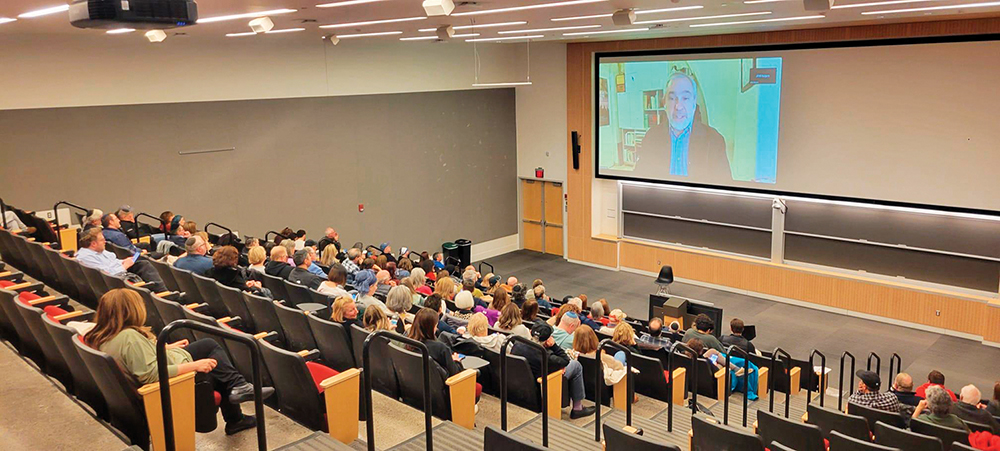There are as many theories of effective education as there are graduate education faculty at universities. Some researchers publish their findings while others are content to promulgate their theories in the classroom. Every so often research from related fields such as neurology, psychology or sociology contribute to this inquiry.
Professor Robert E. Slavin, who recently passed away, was a sociologist whose research into how children learn helped shift the emphasis in classrooms across the country toward teaching reading through phonics, mixing students of different aptitudes rather than educating them on separate tracks, and testing them for vision and other factors that could affect their education.
Dr. Slavin was an early proponent of cooperative learning, an approach through which small teams of students with different academic abilities work together. He documented that if the teams were rewarded as a group while grades were earned individually, less-advanced students who had fallen behind would learn faster without inhibiting the progress of their classmates who were getting better grades. If all slower learners and those who trailed their classmates on standardized tests were segregated in classes and lumped together grade-by-grade, he said, they would be virtually guaranteed to struggle.
Most studies show that mixed-ability grouping doesn’t hurt high-achieving students, and in fact helps those of lower achievement levels. Slavin maintained that when students are grouped by performance, the low-ability groups get slower instruction and lower expectations. Behavior problems increase and low achievement becomes a self-fulfilling prophecy.
In 1987, when Slavin was director of the elementary school program at the Center for Research on Effective Schooling for Disadvantaged Students at Johns Hopkins University, he introduced a program into the Baltimore schools called Success for All. The program encompassed cooperative learning in the classroom, academic tutoring and family support that engaged parents in improving their children’s health and nutrition. It was replicated in thousands of public school classrooms in nearly every state for pre-kindergarten through eighth grade.
In 2014, as a result of his research into why children were struggling to read, Slavin began a program in Baltimore in which 60,000 children were screened for vision problems, 11,000 received full eye exams and 8,000 were given free eyeglasses.
At the time of his death, he was initiating another program, ProvenTutoring, a collaboration among a dozen coaching programs designed to help students who were lagging behind on reading tests and other measures, and had fallen even further behind because of the coronavirus pandemic.
Not everyone agreed with Dr. Slavin’s approach. Some teachers objected to his highly scripted curricula, which they said did not allow enough time for more spontaneous approaches. Others disagreed with his emphasis on phonics, which introduces slower readers to the science of language—the sounds that words make, the letters that represent those sounds and the way that those sounds make words—rather than first teaching them a love of literature.
Slavin graduated from Reed College in Portland, Oregon, in 1972 with a bachelor’s degree in psychology. He worked at Portland elementary schools, and he taught children with developmental deficits. He received a doctorate from the Department of Social Relations at Johns Hopkins University in 1975.
I have long maintained that the methodologies and techniques utilized in special education should be adopted in general education as well. It is no accident that Slavin’s early background teaching children with disabilities influenced his later research.
Slavin was the author of two dozen books, most of which elaborated on his commitment to “evidence-based” research that substantiated the most effective teaching methods.Unlike many ivory tower professors of education, he had a unique ability to translate the science of learning into effective, real-time educational practices.
It seems obvious, but it needs to be stated that being a skilled reader is fundamental to success in all subjects. Effective learning is active, collaborative, and adaptive to each child. One-on-one tutoring by caring human teachers is the most powerful form of teaching for those reasons.
Slavin was fond of saying, “The issue of evidence-based reform is the only really fundamental way forward in education. It transformed medicine; it transformed agriculture; it transformed technology. I don’t know why that shouldn’t be the case in education.”
The truth is that in traditional Jewish pedagogy, Slavin’s theories of cooperative learning have been in force for generations. We call it chavruta learning. It may differ from the elementary classroom to the beit midrash, but the underlying principles are the same. After some initial guidance, students work together to study a text. Reading, comprehension, decoding and interpretive skills are developed using this approach. Often a stronger student will work with a weaker student.
Those who go into education do so to solve real problems in real classrooms. That’s the edifice we are all building together over many years. No one will live to see this structure fully completed, because education keeps growing in techniques and capability. But it’s useful to stop from time to time and remember why we do what we do, and for whom.
Dr. Wallace Greene has had a distinguished career in Jewish education as a teacher, principal, administrator and consultant.











